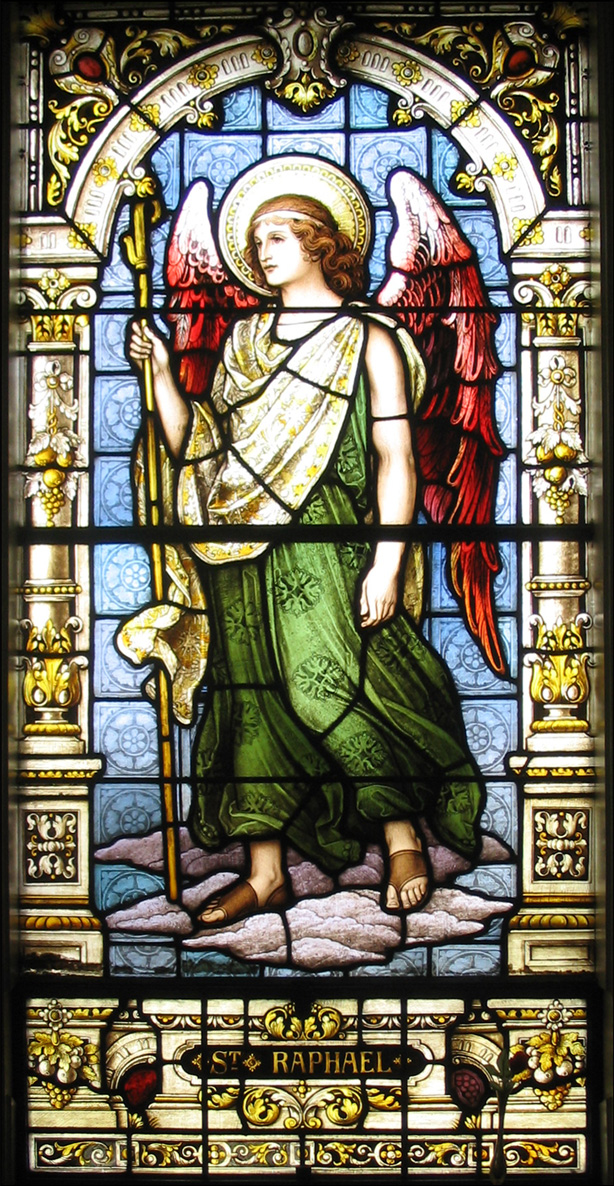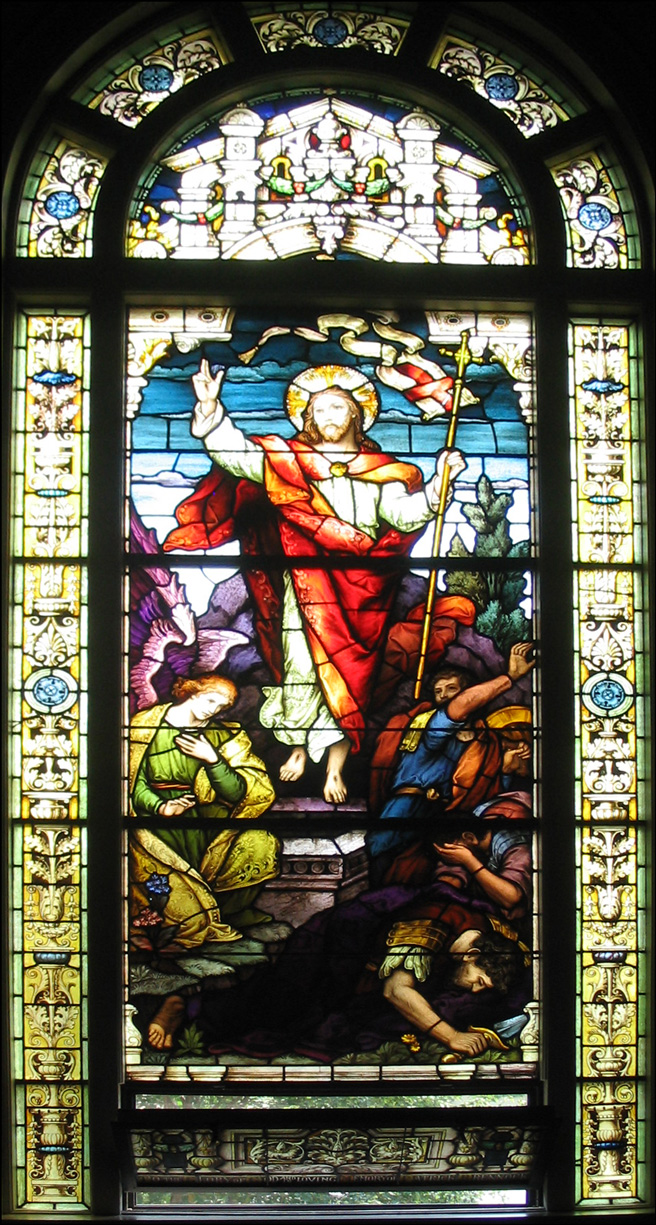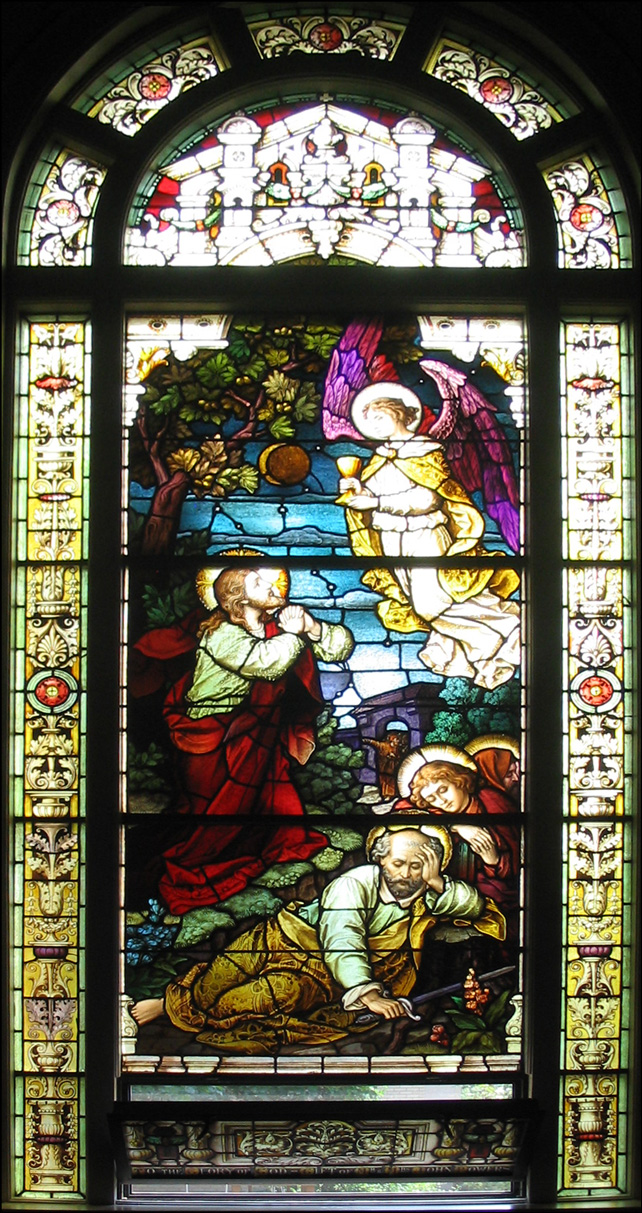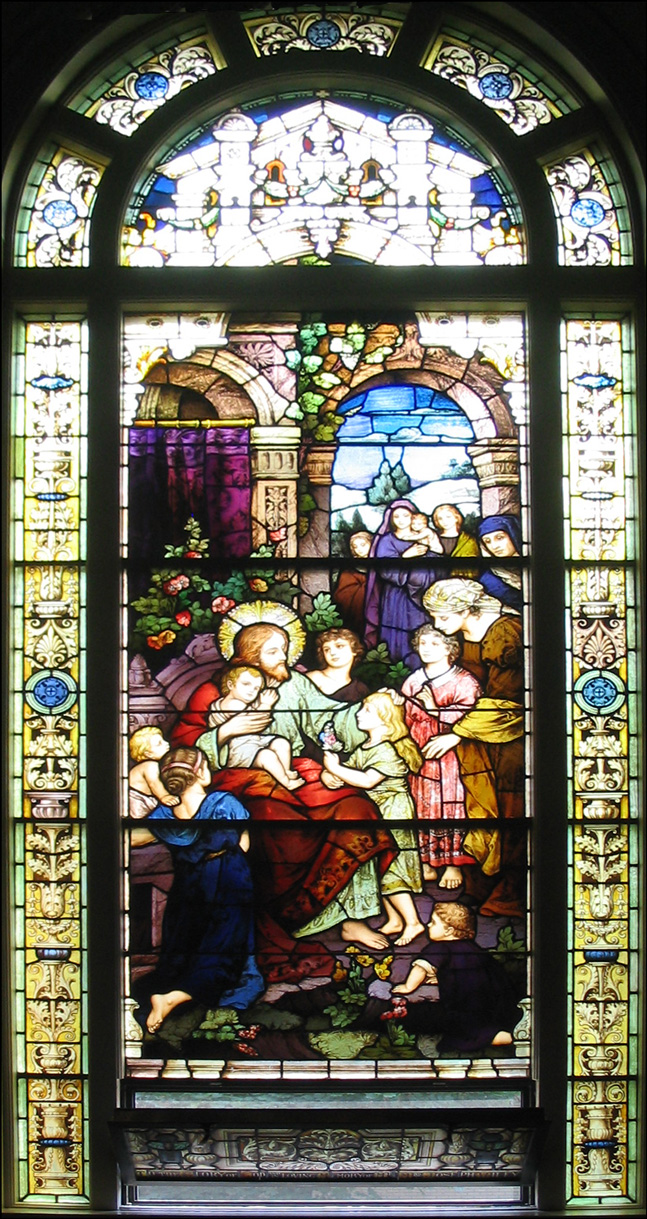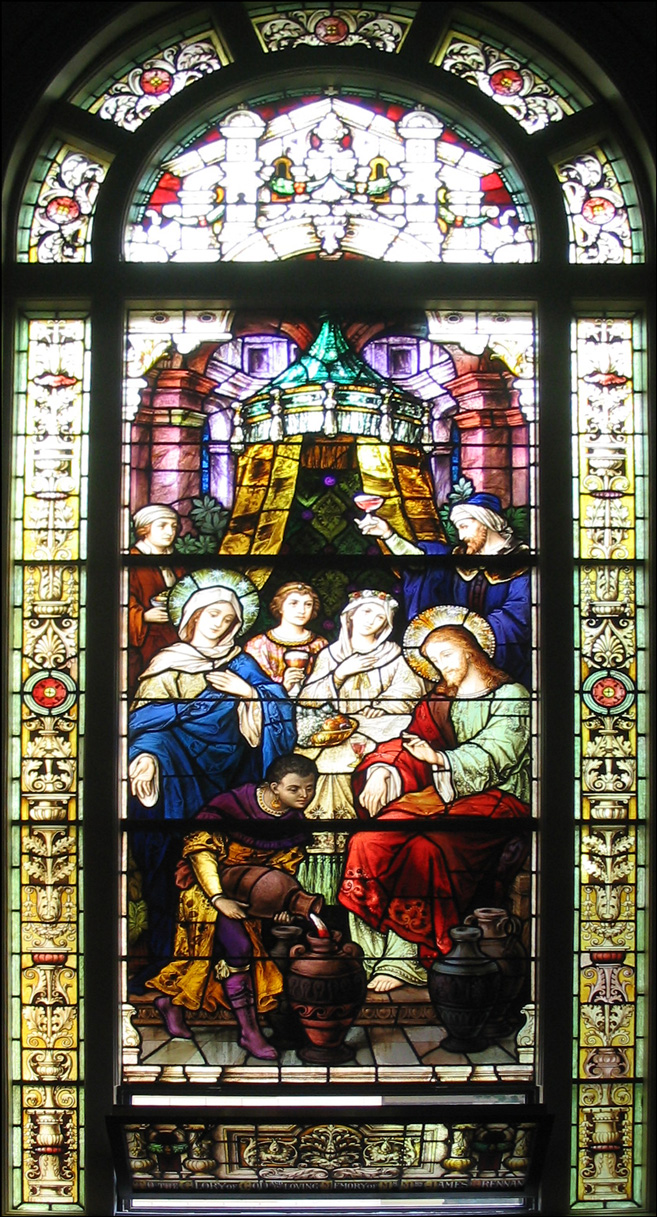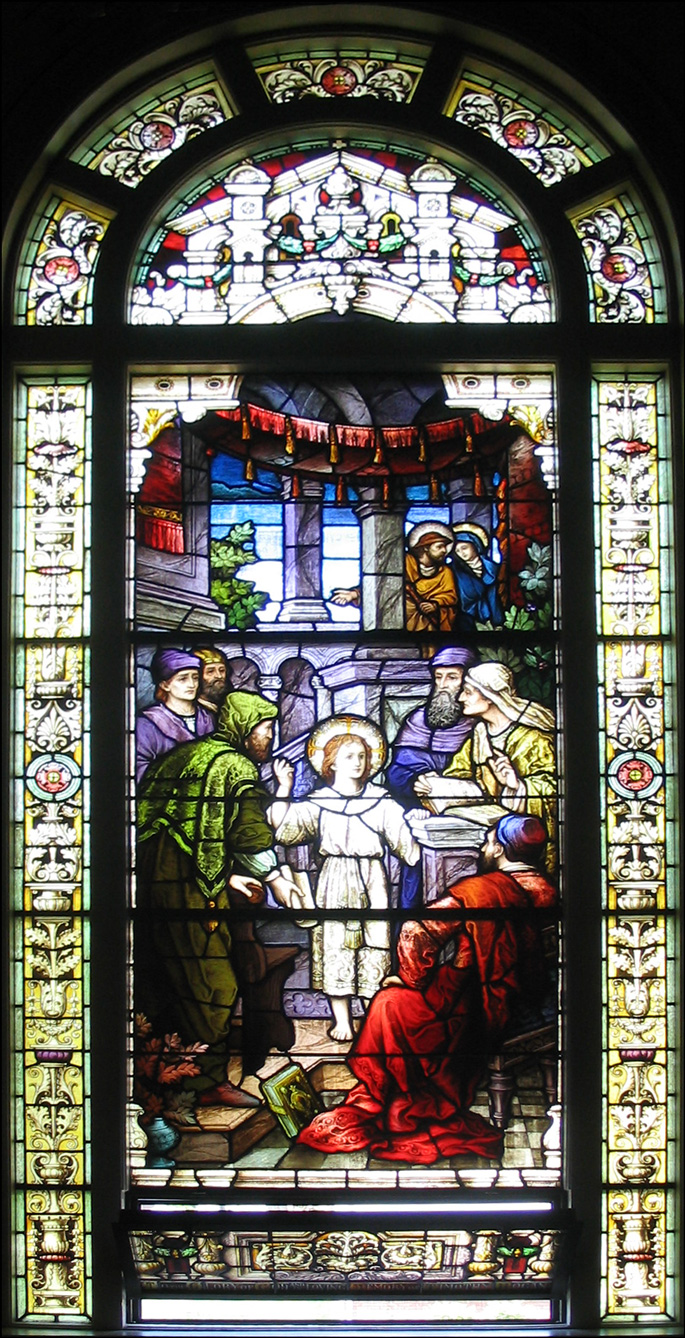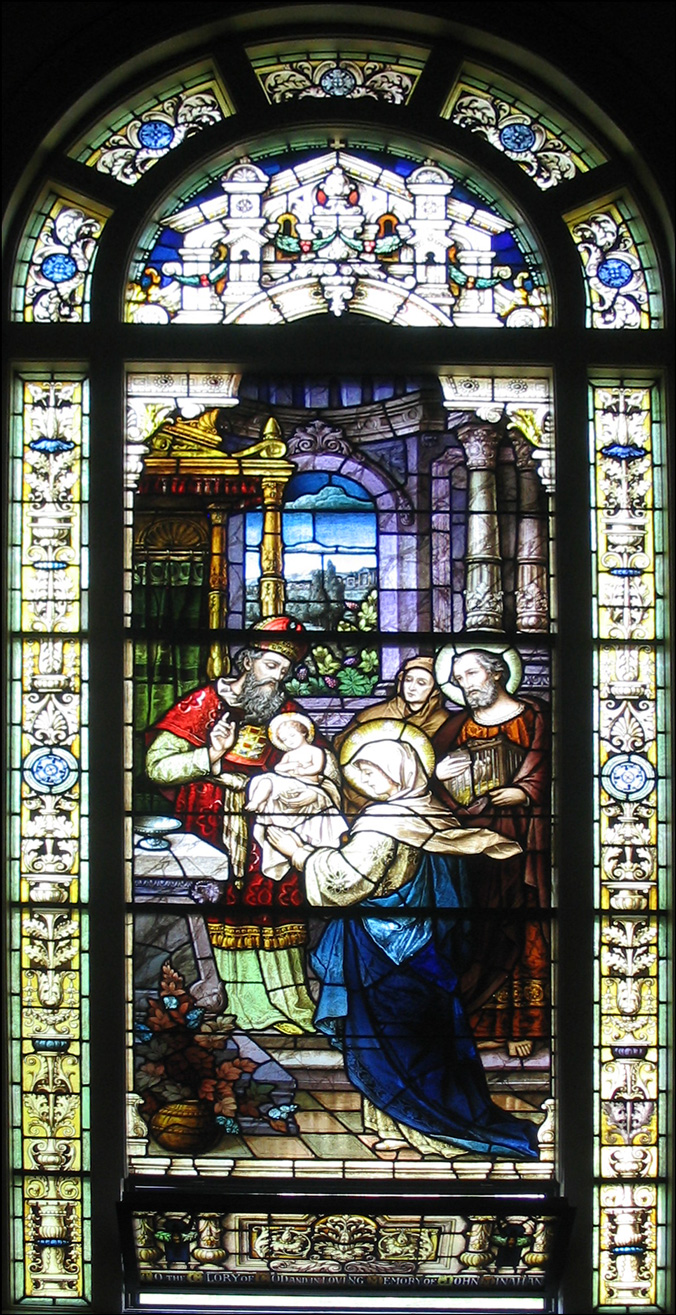After posting many of the records of the Patenaude and Gamache families, it’s time to assemble the information I’ve discovered. The following genealogy does not include living individuals.
Descendants of Aubin Gamache
Generation No. 1
1 . AUBIN GAMACHE was born 01 Mar 1748 in Cap St. Ignace, Lower Canada, son of PIERRE GAMACHE and GENEVIÈVE BELANGER . He married MARIE Tí‰RÈSE SYLVESTRE.
Child of AUBIN GAMACHE and MARIE SYLVESTRE is:
2 . i . ABRAHAM FRANí‡OIS GAMACHE, born 31 Oct 1788 in Cap St. Ignace, Lower Canada.
Generation No. 2
2 . ABRAHAM FRANí‡OIS GAMACHE (AUBIN) was born 31 Oct 1788 in Cap St. Ignace, Lower Canada . He married MARGUERITE LEBLANC 15 Jun 1812 in Ste. Marguerite de Blairfindie /L’Acadie, Lower Canada, daughter of PIERRE LEBLANC and MARGUERITE TRAHANT. She was born 14 Sep 1789 in Ste. Marguerite de Blairfindie /L’Acadie, Lower Canada.
Children of ABRAHAM GAMACHE and MARGUERITE LEBLANC are:
i. MARIE MARGUERITEÂ GAMACHE, born 16 Apr 1813, Ste. Marguerite de Blairfindie /L’Acadie, Lower Canada .
3 . ii . FRANí‡OIS GAMACHE, born 21 Nov 1814, Ste. Marguerite de Blairfindie /L’Acadie, Lower Canada.
iii. AUBIN GAMACHE, born 20 Mar 1816, Ste. Marguerite de Blairfindie /L’Acadie, Lower Canada.
iv. PIERRE GAMACHE, born 04 Mar 1818, Ste. Marguerite de Blairfindie /L’Acadie, Lower Canada.
4 . v . MARIE GAMACHE, born 08 Sep 1820, Ste. Marguerite de Blairfindie /L’Acadie, Lower Canada; died 1898.Generation No. 3
3 . FRANí‡OIS GAMACHE (ABRAHAM FRANí‡OIS, AUBIN) was born 21 Nov 1814 in Ste. Marguerite de Blairfindie /L’Acadie, Lower Canada . He married (1) OSITHE MARTIN 26 Sep 1837 in St. Cyprien /Napierville, Lower Canada, daughter of NICOLAS MARTIN and MARIE GIROUX . She was born 30 Sep 1818 in L’Acadie, St. Jean Co., Lower Canada, and died Bet. 1847 – 1852 . He married (2) MARGUERITE DUTEAU 07 Sep 1852 in St. Cyprien /Napierville, Lower Canada, daughter of JEAN DUTEAU and ANASTASIA MAILLOUX.
Children of FRANí‡OIS GAMACHE and OSITHE MARTIN are:
5 . i . OSITHE GAMACHE, born 22 May 1838, L’Acadie, St. Jean Co., Lower Canada; d. 19 May 1889, Cohoes, Albany Co., New York.
 ii . MARIE GAMACHE, born 25 Dec 1839, Napierville, Napierville Co., Lower Canada; died 22 May 1843, Napierville, Lower Canada.
 iii . MARIE Cí‰LINE GAMACHE, born 15 Aug 1841, Napierville, Napierville Co., Lower Canada.
 iv . FRANí‡OIS GAMACHE, born 24 May 1843, Napierville, Napierville Co., Lower Canada.
 v . DAVID GAMACHE, born 29 Mar 1845, Napierville, Napierville Co., Lower Canada.
 vi . MARIE DOMITILLE GAMACHE, born 07 Jun 1846, Napierville, Napierville Co., Lower Canada; died 10 Jun 1846, Napierville, Lower Canada.
 vii . ADELINE GAMACHE, born 21 May 1847, Napierville, Napierville Co., Lower Canada.Children of FRANí‡OIS GAMACHE and MARGUERITE DUTEAU are:
 viii . FRANí‡OIS Cí‰ADE GAMACHE, born 12 May 1854, St. Cyprien /Napierville, Lower Canada.
 ix . JOSEPH GAMACHE, born 14 Sep 1855, St. Cyprien /Napierville, Lower Canada.4 . MARIE GAMACHE (ABRAHAM FRANí‡OIS, AUBIN) was born 1829, and died 1898 . She married PIERRE DANDURAND . He was born 1828, and died 1899.
Children of MARIE GAMACHE and PIERRE DANDURAND are:
 i . ANRELINE DANDURAND, b. 1852; d. 1876; m. ELZEAR DAVIGNON; b. 1859; d. 1890.
 ii . STEPHANIE DANDURAND, b. 1863; d. 1877.
 iii . AUTHENIE DANDURAND, b. 1864; d. 1865.Generation No. 4
5 . OSITHE GAMACHE (FRANí‡OIS, ABRAHAM FRANí‡OIS, AUBIN) was born 22 May 1838 in L’Acadie, St. Jean Co., Lower Canada, and died 19 May 1889 in Cohoes, Albany Co., New York . She married CHARLES Gí‰Dí‰ON PATENAUDE 24 Oct 1862 in Saint-Bernard-de-Lacolle, Les Jardins-de-Napierville, Québec, Canada, son of FRANí‡OIS PATENAUDE and MARGUERITE COGNAC-DIT-LEVEILLE . He was born 10 Jun 1840 in St. Valentin, Lower Canada, and died 30 Mar 1940 in Cohoes, Albany Co., New York.
Children of OSITHE GAMACHE and CHARLES PATENAUDE are:
6 . i . MARIE Fí‰BRONIE PATENAUDE, born 19 Mar 1863, St. Valentin, Lower Canada.
 ii . HORMISDAS PATENAUDE, born 14 May 1864, St. Valentin, Lower Canada; died 18 Dec 1881, Coaticook, Quebec, Canada.
7 . iii . MARIE LEA PATENAUDE, born 31 Dec 1865, St. Valentin, Lower Canada; d. 11 Jul 1926, Cohoes, Albany Co., New York.
 iv . MARIE EDWIDGE PATENAUDE, born 17 Oct 1867, Barford, Québec, Canada; m. GEORGE PHANEUF-CHABOT, 11 Dec 1887, St. Joseph Church /Cohoes, Albany Co., New York.
8 . v . MARIE Zí‰NAIDE ZITE PATENAUDE, born 12 Jun 1870, Coaticook, Québec, Canada; d. 21 May 1959, Central Ave. Convalesent Home /Albany, Albany Co., New York.
9 . vi . JOSEPH CHARLES Gí‰Dí‰ON PATENAUDE, born 02 Mar 1872, Coaticook, Quebec, Canada.
 vii . HENRIETTE PATENAUDE, born 11 Mar 1874, Coaticook, Quebec, Canada; m. HENRY ROBITAILLE.
 viii . PIERRE FRANí‡OIS PATENAUDE, born 02 Feb 1876, Coaticook, Quebec, Canada.
 ix . JOSEPH FRANí‡OIS ADELARD PATENAUDE, born 03 Jun 1879, Coaticook, Quebec, Canada; died 09 Apr 1880, Coaticook, Quebec, Canada.
 x . ANONYME PATENAUDE, born 09 Mar 1881, Coaticook, Quebec, Canada; died 09 Mar 1881, Coaticook, Quebec, Canada.Generation No. 5
6 . MARIE Fí‰BRONIE PATENAUDE (OSITHE GAMACHE, FRANí‡OIS, ABRAHAM FRANí‡OIS, AUBIN) was born 19 Mar 1863 in St. Valentin, Lower Canada . She married JOSEPH HORMISDAS NORMANDIN 09 Oct 1882 in Saint-Valentin, Le Haut-Richelieu, QC, Canada, son of JOSEPH NORMANDIN and URSULE BANLIER . He was born Abt. 1860 in New York.
Children of MARIE Fí‰BRONIE PATENAUDE and JOSEPH NORMANDIN are:
 i. JOSEPH HENRI NORMANDIN, born 14 Jun 1883, St. Valentin, Québec, Canada.
 ii . EDWIDGE NORMANDIN, b. 1884, Lower Canada.
 iii . LEA NORMANDIN, b. 07 Oct 1885, New York.
 iv . GUILLIAME NORMANDIN, b. 06 Mar 1887, New York.
 v . RAOUL NORMANDIN, b. 17 Jun 1890, Cohoes, Albany Co., New York.
 vi . RUDOLPH NORMANDIN, b. Abt. 1892.
 vii . EARL NORMANDIN, b. 28 Mar 1894.
 viii . BERTHA NORMANDIN, b. 1896.
 ix . LEOPOLD NORMANDIN, b. 1899.
 x . OMER NORMANDIN, b. 13 Sep 1901.
 xi . CHESTER J. NORMANDIN, b. 1904; d. Aft. 1930.
 xii . ARMAND J. NORMANDIN, b. 26 Jul 1905, Cohoes, Albany Co., New York.7 . MARIE LEA PATENAUDE (OSITHE GAMACHE, FRANí‡OIS, ABRAHAM FRANí‡OIS, AUBIN) was born 31 Dec 1865 in St. Valentin, Lower Canada, and died 11 Jul 1926 in Cohoes, Albany Co., New York . She married (1) THOMAS ARSHAMBAULT . He was born 04 Jul 1859 in Churchill, Canada, and died 25 Jun 1960 . She married (2) HENRI F. ARCHAMBAULT 05 Apr 1893 in Cohoes, Albany Co., New York, son of JOSEPH ARCHAMBAULT . He was born Feb 1865 in New York.
Children of MARIE LEA PATENAUDE and THOMAS ARSHAMBAULT are:
 i . THOMAS ARSHAMBAULT.
 ii . CHRISTOPH ARSHAMBAULT.
 iii . LAKK ARSHAMBAULT.
 iv . WILLBERT ARSHAMBAULT.
10 . v . ALLISON ARSHAMBAULT, b. 14 Apr 1912, Troy, Rensselaer Co., New York; d. 25 Dec 1949, Cohoes, Albany Co., New York.Children of MARIE PATENAUDE and HENRI ARCHAMBAULT are:
11 . vi . LEO ARCHAMBAULT, b. Jun 1894, New York.
 vii . VALMORE F. ARCHAMBAULT, b. 04 Mar 1897, Cohoes, Albany Co., New York; d. Jul 1984, Maine; m. FLORENCE UNKNOWN, Abt. 1927; b. Abt. 1898, New York.
 viii . LUCILLA ARCHAMBAULT, b. Abt. 1900, New York.
12 . ix . JEANNETTE I. ARCHAMBAULT, b. 12 Mar 1903, Cohoes, Albany Co., New York; d. 26 Dec 1938, Cohoes, Albany Co., New York.8 . MARIE Zí‰NAíDE ZITE PATENAUDE (OSITHE GAMACHE, FRANí‡OIS, ABRAHAM FRANí‡OIS, AUBIN) was born 12 Jun 1870 in Coaticook, Québec, Canada, and died 21 May 1959 in Central Ave. Convalesent Home /Albany, Albany Co., New York . She married PAUL EDWARD CHARRON, SR. 24 Oct 1900 in St. Joseph’s Church /Cohoes, Albany Co., New York, son of JOSEPH CHARRON and ADELINE GALIFEAU . He was born 26 Sep 1874 in Cohoes, Albany Co., New York, and died 26 Jan 1943 in Cohoes, Albany Co., New York.
Children of MARIE Zí‰NAíDE PATENAUDE and PAUL CHARRON are:
13 . i . ARTHUR ANTHONY CHARRON, b. 25 Sep 1901, 125 Columbia Street /Cohoes, Albany Co., New York; d. 23 Jan 1978, Hudson, Columbia Co., New York.
14 . ii . CECELIA ANTONETTE CHARRON, b. 11 Nov 1902, Cohoes, Albany Co., New York; d. 07 Sep 1946, Cohoes, Albany Co., New York.
15 . iii . ALICE HARRIET EUGENIA CHARRON, b. 01 Oct 1904, Cohoes, Albany Co., New York; d. 25 Sep 1992, St. Peter’s Hospice /Albany, Albany Co., New York.
16 . iv . PAUL EDWARD CHARRON, JR., b. 04 Dec 1908, Cohoes, Albany Co., New York; d. 31 Dec 1991, Troy, Rensselaer Co., New York.
17 . v . GEORGE VALMORE CHARRON, b. 16 Apr 1911, Cohoes, Albany Co., New York; d. 11 Jan 1971, Burlington, Franklin Co., Vermont.9 . JOSEPH CHARLES Gí‰Dí‰ON PATENAUDE (OSITHE GAMACHE, FRANí‡OIS, ABRAHAM FRANí‡OIS, AUBIN) was born 02 Mar 1872 in Coaticook, Quebec, Canada . He married DIANA MARIE PENELOPE CARPENTER, daughter of JOSEPH CARPENTER and ODILE UNKNOWN . She was born Jan 1875 in Blackstone, Massachusetts.
Child of JOSEPH PATENAUDE and DIANA CARPENTER is:
18 . i . FRANCIS X. PATENAUDE I, b. 15 Dec 1909; d. Aug 1985.Generation No. 6
10 . ALLISON ARSHAMBAULT (MARIE LEA PATENAUDE, OSITHE GAMACHE, FRANí‡OIS, ABRAHAM FRANí‡OIS, AUBIN) was born 14 Apr 1912 in Troy, Rensselaer Co., New York, and died 25 Dec 1949 in Cohoes, Albany Co., New York . She married TENNA DEAY 30 Dec 1935 in Schenectady, Schenectady Co., New York . He was born 26 Dec 1911 in Paris, France, and died 25 Dec 1949 in Cohoes, Albany Co., New York.
Child of ALLISON ARSHAMBAULT and TENNA DEAY is:
 i . THOMAS DEAY, b. 31 Dec 1940, Troy, Rensselaer Co., New York; d. 30 Dec 1997, Troy, Rensselaer Co., New York.11 . LEO ARCHAMBAULT (MARIE LEA PATENAUDE, OSITHE GAMACHE, FRANí‡OIS, ABRAHAM FRANí‡OIS, AUBIN) was born Jun 1894 in New York . He married JEANETTE UNKNOWN Abt. 1913 . She was born Abt. 1895 in Quebec, Canada.
Children of LEO ARCHAMBAULT and JEANETTE UNKNOWN are:
 i . PAUL ARCHAMBAULT, b. 23 Dec 1913, Quebec, Canada; d. Mar 1953, New York.12 . JEANNETTE I. ARCHAMBAULT (MARIE LEA PATENAUDE, OSITHE GAMACHE, FRANí‡OIS, ABRAHAM FRANí‡OIS, AUBIN) was born 12 Mar 1903 in Cohoes, Albany Co., New York, and died 26 Dec 1938 in Cohoes, Albany Co., New York.
13 . ARTHUR ANTHONY CHARRON (MARIE ZENAIDE ZITE PATENAUDE, OSITHE GAMACHE, FRANí‡OIS, ABRAHAM FRANí‡OIS, AUBIN) was born 25 Sep 1901 in 125 Columbia Street /Cohoes, Albany Co., New York, and died 23 Jan 1978 in Hudson, Columbia Co., New York . He married GOLDIE DUNTZ 25 Sep 1940 in Churchtown, Columbia Co., New York, daughter of BERTHA DUNTZ . She was born 18 Feb 1905 in Hudson, Columbia Co., New York, and died 04 Mar 2003 in New York.
Child of ARTHUR CHARRON and GOLDIE DUNTZ is:
 i . ARTHUR PAUL CHARRON, b. 18 Aug 1941, Hudson, Columbia Co., New York; d. 25 Jan 2004, New York.14 . CECELIA ANTONETTE CHARRON (MARIE ZENAIDE ZITE PATENAUDE, OSITHE GAMACHE, FRANí‡OIS, ABRAHAM FRANí‡OIS, AUBIN) was born 11 Nov 1902 in Cohoes, Albany Co., New York, and died 07 Sep 1946 in Cohoes, Albany Co., New York . She married WILLIAM THOMAS NORMILE 18 May 1934 in Cohoes, Albany Co., New York, son of THOMAS WILLIAM NORMILE . He was born 1898 in Cohoes, Albany Co., New York, and died 23 Jun 1955 in Waterford, Saratoga Co., New York.
Child of CECELIA CHARRON and WILLIAM NORMILE is:
20 . i . THOMAS NORMILE, b. 28 Feb 1935, Cohoes, Albany Co., New York; d. 25 Sep 1998, Watervliet, Albany Co., New York.15 . ALICE HARRIET EUGENIA CHARRON (MARIE ZENAIDE ZITE PATENAUDE, OSITHE GAMACHE, FRANí‡OIS, ABRAHAM FRANí‡OIS, AUBIN) was born 01 Oct 1904 in Cohoes, Albany Co., New York, and died 25 Sep 1992 in St. Peter’s Hospice /Albany, Albany Co., New York . She married JOHN JOSEPH DANKO 27 Jun 1935 in Ste. Marie’s Church /Cohoes, Albany Co., New York, son of MICHAEL DANKO and MARIANNA DZIURZYNSKA . He was born 02 May 1905 in Nienadowa, Powiat Przemyski, Galicia, Austria-Poland, and died 30 Dec 1962 in Albany, Albany Co., New York.
16 . PAUL EDWARD CHARRON, JR. (MARIE ZENAIDE ZITE PATENAUDE, OSITHE GAMACHE, FRANí‡OIS, ABRAHAM FRANí‡OIS, AUBIN) was born 04 Dec 1908 in Cohoes, Albany Co., New York, and died 31 Dec 1991 in Troy, Rensselaer Co., New York . He married ANNETTE GIRARD 24 Sep 1938 in Cohoes, Albany Co., New York, daughter of PETER GIRARD and MALVINA SHEPARD . She was born 19 Apr 1912 in Cohoes, Albany Co., New York, and died 28 Apr 1984 in Cohoes Memorial Hospital /Latham, Albany Co., New York.
17 . GEORGE VALMORE CHARRON (MARIE ZENAIDE ZITE PATENAUDE, OSITHE GAMACHE, FRANí‡OIS, ABRAHAM FRANí‡OIS, AUBIN) was born 16 Apr 1911 in Cohoes, Albany Co., New York, and died 11 Jan 1971 in Burlington, Franklin Co., Vermont . He married ALICE KAY FINNIE in Jonesville, Saratoga Co., New York . She was born 01 Feb 1909 in Rennselaer Co., New York, and died 01 Apr 1997 in Decatur, Dekalb Co., Georgia.
Â
Child of GEORGE CHARRON and ALICE FINNIE is:
 ii . LINDA LEE CHARRON, b. 14 Jan 1946, Province of New Brunswick, Canada; d. 20 Aug 1954, Decatur, Dekalb Co., Georgia; Adopted child.Child of GEORGE CHARRON and his second wife is:
 iii . SUSAN MARY CHARRON, b. 23 Nov 1950; d. 07 May 2002, Reynoldsburg, Franklin Co., Ohio.18 . FRANCIS X. PATENAUDE I (JOSEPH CHARLES Gí‰Dí‰ON, OSITHE GAMACHE, FRANí‡OIS, ABRAHAM FRANí‡OIS, AUBIN) was born 15 Dec 1909, and died Aug 1985 . He married VERONICA ANGUS 1935, daughter of JOHN ANGUS and ROZALIA UNKNOWN . She was born 1910.
Copyright © 2007 Stephen J. Danko

